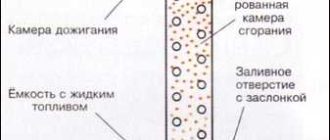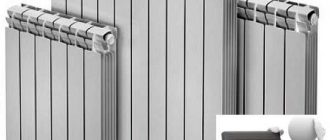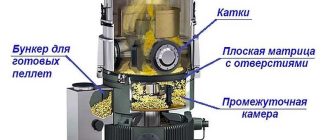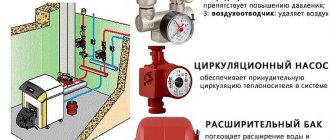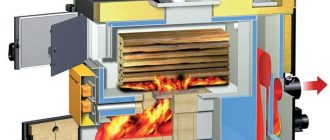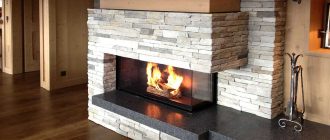Equipping dacha houses for temporary visits with a full-fledged water heating system is a waste of money. This option only works if the system works in the “anti-freeze” mode in the absence of the owners, maintaining a constant +5°C. In other cases, use heating units that can quickly warm up the room. For example, you can put a long-burning fireplace stove for a dacha. When installing a heater of this type, you can not only warm up the room, but also admire the flame.
Isi artikel
What is prolonged combustion in heating furnaces
As is known, the intensity of the fuel burning process depends on the amount of oxygen supplied. With a sufficient amount of it, fuel burns intensively, releasing a large amount of heat, but burns the tab quickly. With a limited supply of air, combustion can go to the stage of smoldering, in which even flames are not always observed.
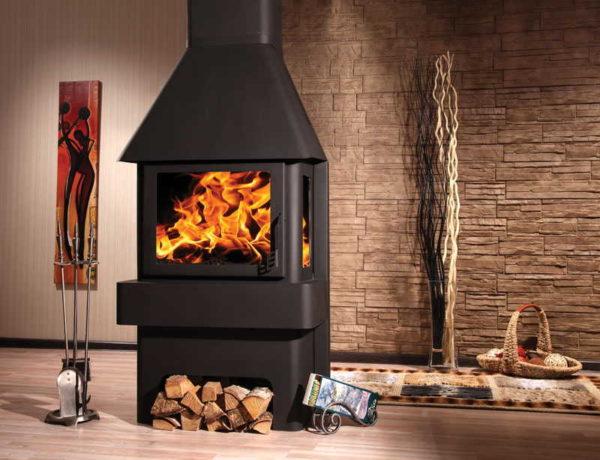
In principle, any stove by manipulating the gate valves can be transferred to the mode of prolonged combustion. Another thing is that not all of them are designed for such a mode. Ordinary stoves with closed shutters can even be dangerous – in the smoldering mode can become a source of smoke or carbon monoxide. So it is better to look for a fireplace stove for dacha in the characteristics of which is indicated in the line “long burning” and stands the maximum burning time of one tab. It can be 6-18 hours.
How to determine whether the furnace supports long burning or not
One of the characteristics by which you can distinguish a long-burning fireplace stove for dacha from the usual heating – hermetic its performance. After all, you need to make it so that the air comes in the right amount. Not more and not less. The second sign – the presence of several adjustable flaps.
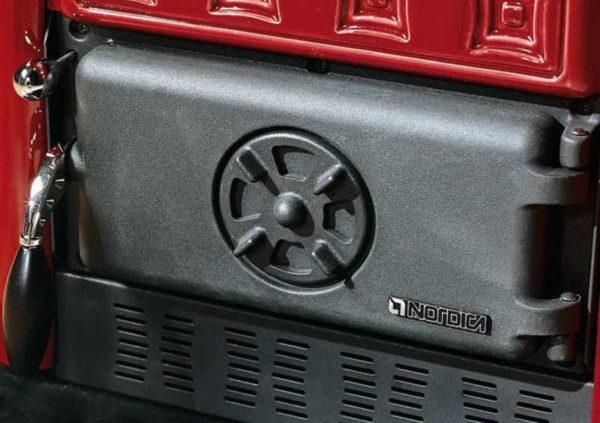
Tightness can be checked only during the furnace, but the presence of flaps is monitored visually and how tightly they close off the access of air can also be seen how well they move. In some models, the air supply is regulated through the ash drawer. In this case, it is necessary to look how well it “goes”, how tightly it closes the air supply. Although the ash drawer can not be airtight, it should not leave large holes. You can also trace the presence of a seal on the door, a chimney on the pipe. All these are criteria that can be used to determine whether the stove supports long burning.
With afterburning gases
What else distinguishes long burning stoves from conventional ones? The fact that they can burn off the gases that are produced during the combustion of wood. In conventional stoves, these gases fly into the pipe, as their ignition requires a special mode – high temperature and limited access to air. In long-burning stoves, the fuel chamber can be divided into several parts. In one burns wood, in the rest – gases that were formed during the decomposition of fuel. Such stoves are also called gas-generator stoves, because it is in the smoldering mode that the largest amount of gases is formed. Characteristically, most of them have a calorific value higher than that of the fuel, the decomposition of which they were formed. So when using conventional stoves, a significant part of the heat is lost. That is why it is considered that the stove fireplace long combustion for cottages and homes is more profitable, because it requires less fuel.
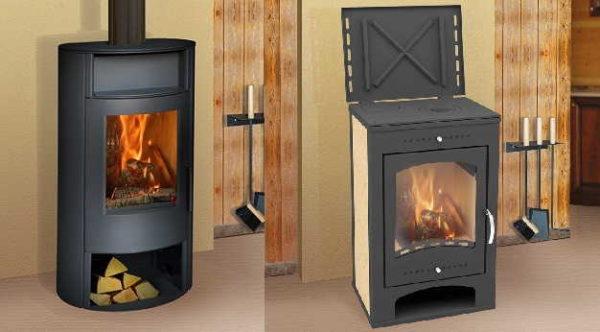
The minus is that a long-burning fireplace stove for a dacha or house costs a solid amount of money. The price tag on models that support long-term combustion starts from 400-450$, if it is a Russian manufacturer and the body is made of structural steel. Domestic stainless steel is twice as expensive, and cast iron – two more times. Imported stove-fireplaces with a long burning function, with the same characteristics, about 70-100% more expensive.
Difference between a classic open fireplace and a fireplace stove
The classic open fireplace is only an additional source of heat, which can not heat the room in the cold. It gives heat in a small amount, it is distributed only during the combustion of fuel, and just before the furnace. This type of heater is good for a damp summer or fall/spring day. In winter, it is not able to give enough heat for the whole room, because it needs a good draft, which “pulls out” most of the heat.
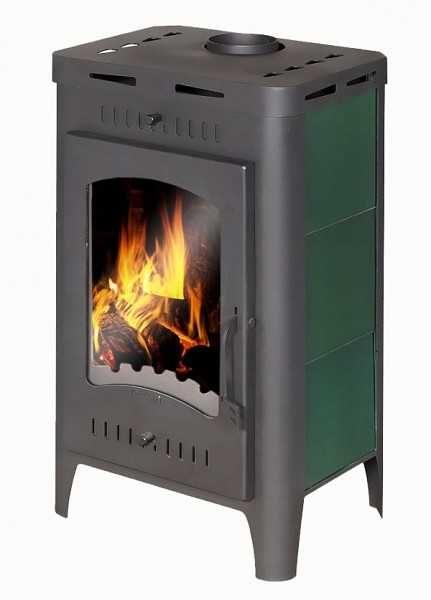
The stove-fireplace has other characteristics, a closed furnace. Such a unit can heat the room independently (with properly selected power). And the long-burning fireplace stove for cottages and homes also does it economically, as it uses the energy of fuel to the maximum.
Jenis dan varietas
Long-burning fireplace stove can only be of the closed type, because only in the presence of a door (also a sealed door) there is an opportunity to regulate the supply of oxygen, which is necessary to transfer the unit to the mode of prolonged combustion. Specially designed stoves-fireplaces differ from the usual heating geometry of the furnace: it is wider, the window is usually horizontally oriented (although there are also vertical models). Stove door is usually made almost the entire width of the facade, which makes it possible to admire the flames.
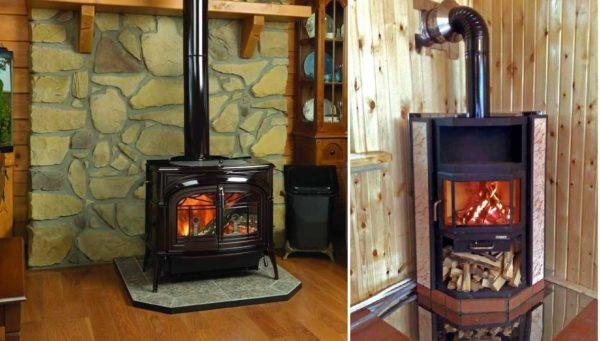
By design, fireplace stoves are wall-mounted (linear) and angular. Wall-mounted have a flat back wall, installed at a distance of at least 2 meters from the corner. Corner ones are specially designed to be installed in the corner. But when installing them, the walls to which the body adjoins should be non-combustible.
There is also a special model of stoves-fireplaces – three-sided. In them, only the back wall is made of metal, the other three are made of glass. Such options are very decorative, the flame can be observed not only in front of the door, but also from almost anywhere in the room. They can be installed at the wall, as the usual linear (Neman, Volga, Angara), there are angular versions (Amur and Louvre), but the most interesting – built-in models with three all-glass walls, which make even special partitions (German company Hark).
If we talk about the practical component, it is useful if the stove fireplace long burning fireplace for the cottage has in the upper part of the burners on which you can warm / cook food. In the conditions of the dacha it is a very useful option. There are also metal fireplaces with an oven, but here they are unlikely to support a long burning mode.
There are models with a heat exchanger. This version of the stove-fireplace for a house of permanent residence. To the heat exchanger connect radiators and build a complete system of water heating. Just instead of a traditional heating boiler, a metal stove-fireplace with a heat exchanger is used. The option is suitable for small buildings, as very powerful fireplaces of this type can not be found.
What kind of fireplace stove is better: choose the material
The speech will be about what materials can be made of what materials the long-burning fireplace stove for dacha and home. In general, metal fireplaces, to protect the walls from very high temperatures, from the inside are lined (lined) with heat-resistant materials. Most often it is fireclay brick, but can be heat-resistant ceramic (more expensive models). This leads to the fact that many models are not very hot from the outside – you can hold your hand. The main heat is radiated through the door and this should be taken into account when choosing the location of the stove – the distance from the opposite wall should be larger, otherwise it will be very hot.
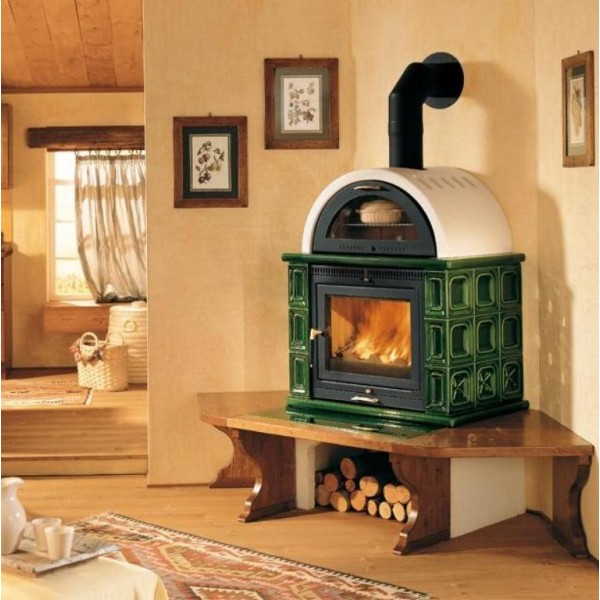
In order to make the walls of the heater were safe, they are lined with heat-consuming materials such as natural stone, special ceramic tiles, etc. The second (cheaper) option is to install a metal casing that protects from touching the heated body.
Steel: black and structural
The most inexpensive stoves-fireplaces are made of ordinary black steel. The most budget-friendly option, but also the fastest burning. To make the walls of the stove last longer, they are made of considerable thickness – 5-8 mm is not the limit. To protect against corrosion, the furnace is covered with special paints.

More expensive fireplace stoves are made of structural steel. This material has increased resistance to high temperatures. Due to better heat tolerance, the wall thickness is less, but the cost of fireplaces made of structural steel is higher (due to the price of the material).
Stainless steel
Stainless steel is used heat-resistant, the wall thickness rarely exceeds 3-4 mm. The surface can be matte, polished or blackened, sometimes painted with powder heat-resistant paints.
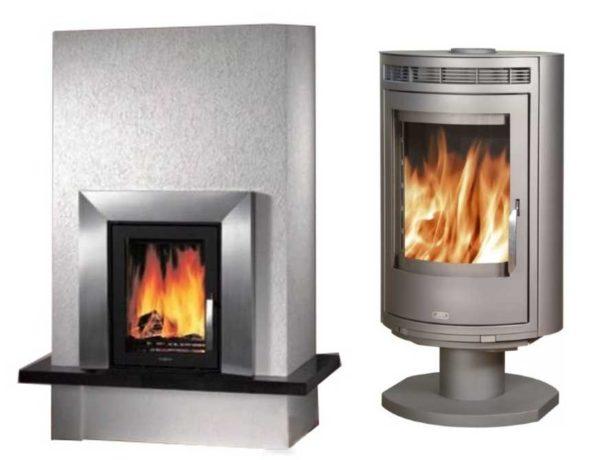
Stainless steel stoves-fireplaces – an expensive pleasure, and their durability depends largely on the quality of the seams. To weld alloying metals (which give the metal stainless properties) do not burn out, welding must be conducted in a protective environment. And this is a complex expensive equipment. And the price of such models, all other characteristics being equal, is higher. But if the seams were welded under normal conditions, very quickly begins to destroy the metal, as it is due to high heat ceased to be “stainless” and heat-resistant.
Besi tuang
This material is one of the most durable. The walls of the stoves are obtained quite thick, massive. So the cast-iron stove-fireplace heats up longer, but it also cools down longer. And it takes more than one decade for normal cast iron to “burn out”. But there is another risk of destruction: if water gets on the heated surface, cast iron can crack. So, if you are thinking of buying a cast iron stove-fireplace with a stove, you will have to be very careful with it. The good news is that most of the “cast iron” is assembled from fragments on bolted connections or on the principle of stud / groove. If the stove fails, you can disassemble it, order only the part you need, and replace it. But this is possible only if the model is not removed from production.
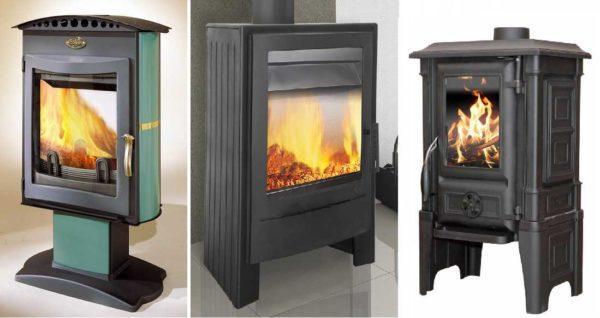
There is another point: cast iron is heavy. Therefore, when buying, pay attention to the weight. Without a separate foundation, you can install stoves weighing up to 200 kg (with fuel and chimney). And even in this case, if the floor is wooden, you may need additional reinforcing beams.
Type of fuel
Most of the stoves-fireplaces are designed for the use of firewood. The species of firewood is not particularly important – coniferous or deciduous species, it is not so important. It is important that the wood was dry. For this purpose, many models have a shelf for storing firewood. After igniting the fireplace, a new portion is placed on the shelf, which dries at an accelerated pace, as the temperature is higher.
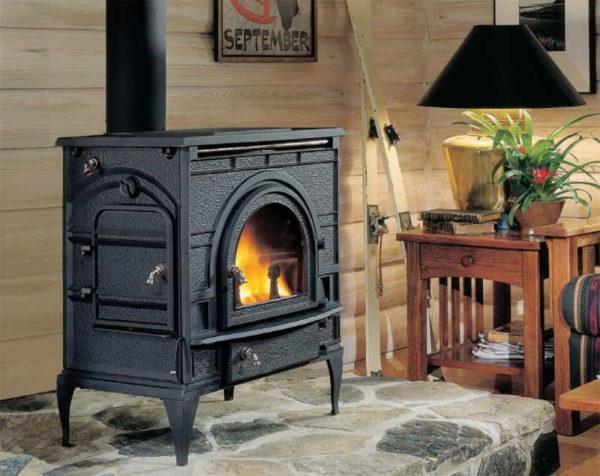
There are metal fireplaces that can be stoked with coal. This type of fuel gives more heat with less consumption. But when burning coal, the temperature in the firebox is much higher than when burning wood. That is why it is not recommended to fire a wood-burning stove-fireplace with coal. No, you can pour coal, and it will burn well. But after a short period of time, the fireplace stove will burn through. This will happen because the burning temperature was much higher than “planned”. If you plan to periodically use coal, you should look for a long-burning stove-fireplace for dacha or house, which in the characteristics indicates the possibility of stoking with coal (black or brown, there is also a difference).
Also to stoke the metal stove-fireplace can be fuel briquettes of different types, there are those that can work on fuel pellets (pellets). In general, when choosing, pay attention to the type of fuel used. It is important.
Choice of power
In the description of the metal stove-fireplace is necessarily indicated for heating what area it is designed to heat. When choosing the power is better to take with a reserve of about 15-20%. This is so that even in the coldest days do not overheat the case He in this mode quickly burns out.
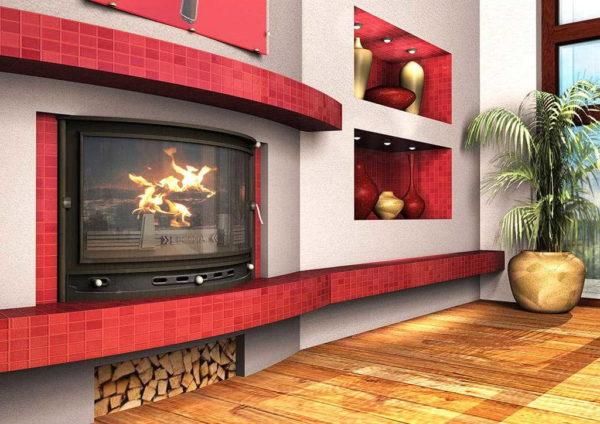
On the other hand, you should not take too large a reserve. Solid-fuel stoves-fireplaces are hard to regulate the temperature. And, if the power of the heating equipment is many times more than necessary, when stoking in the room will be too hot. There’s nothing you can do about it. If the wattage is too high, even in smoldering mode there can be too much heat.
So, when choosing the power of a long-burning fireplace stove for a dacha or a house, it is taken with a reserve of 15-25%. For example, the heated area – 100 square meters . A suitable metal fireplace should have the ability to heat 115-125 square meters.
Video review of the stove-fireplace Kratki Koza K9.
Mounting and installation
Metal stove fireplace long burning fireplace for a dacha or house – a fire hazardous object. So the requirements for its installation are quite strict. No, installation permits are not required, but it is better to comply with fire safety requirements – for your own safety.
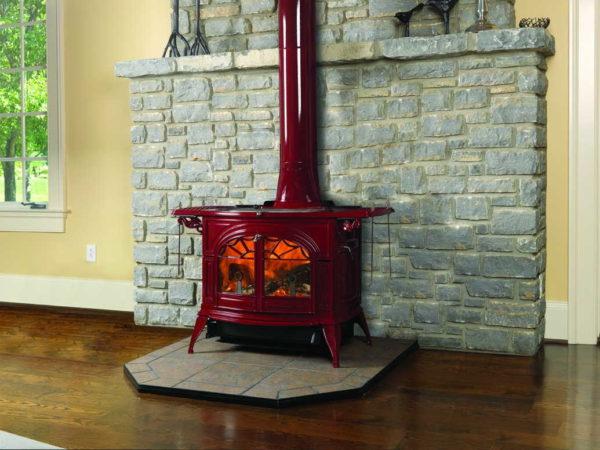
How and where to install
Each manufacturer completes its product with an instruction manual for installation and operation. It specifies the exact requirements specifically for this model. After all, the distance to combustible structures (wooden walls, for example), depend on how much the body is heated during the furnace, and this depends on the design. And it is the manufacturer who knows the nuances of their product better, since they conduct testing in different modes. Therefore, when choosing the place of installation, the distance from the walls to the body, it is better to adhere to the manufacturer’s recommendations. On average, these distances are 15-25 cm. This may come in handy when selecting dimensions, but for specific figures, see the instructions.
When choosing a place it is still necessary to take into account that from the fireplace door to the opposite wall should remain at least 1.5 meters. Nearby gas pipes should not pass, the electrical wiring should be at least 50 cm away.
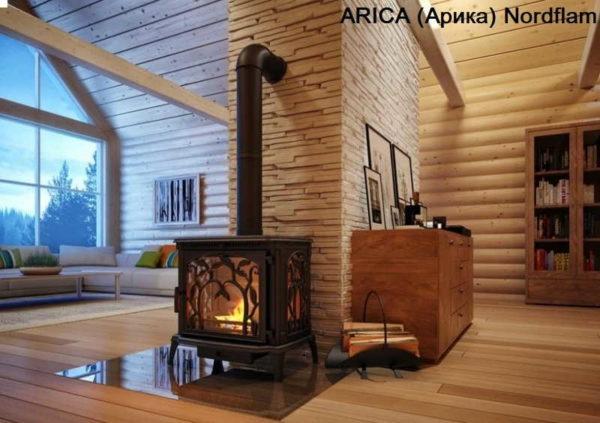
On the floor under the long-burning fireplace stove for a cottage or house should be laid non-combustible substrate. This can be a metal sheet, ceramic tile, brick, stone. The size of the non-combustible pad should be larger than the dimensions of the stove by 20 cm on the sides and back and 40 cm larger in front.
If the floor is wooden, it is easiest to lay a sheet of metal of the required size and thickness of 1 mm. Under it on a wooden floor lay a sheet of basalt cardboard (thickness 0.8-1 cm), which serves for thermal insulation and protection of wood from overheating. There is another option: on the metal sheet lay a brick on clay mortar (half a brick thick) or ceramic tiles on heat-resistant glue. In case of using tiles under the metal, it is also desirable to put basalt cardboard, but of a smaller thickness.
Chimney
For metal stoves-fireplaces usually used metal sandwich chimney Minimum internal diameter – 200 mm, the thickness of insulation (basalt wool) is not less than 60 mm at a density of insulation 15-30 kg/m³, the thickness of the inner wall of stainless steel – not less than 1 mm. These parameters are the minimum requirements for normal operation of the stove-fireplace. Good chimney – one of the most important factors that affect the operation of the heater.
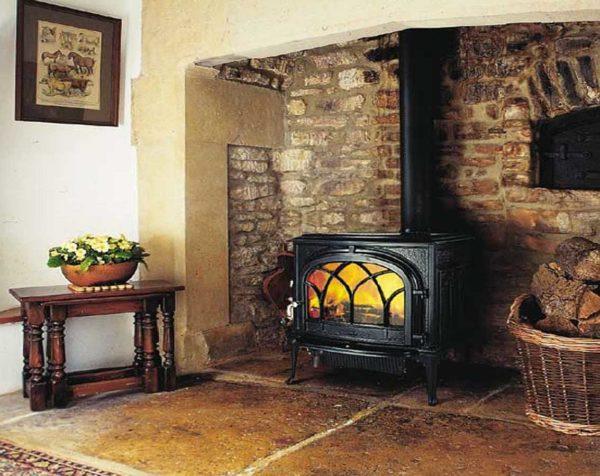
For good operation of a fast-burning fireplace stove for a cottage or home should have a chimney height of at least 5 meters, if you count from the grate. In addition, it is necessary to adhere to the following rules:
- The ledges are made at an angle of no more than 30°.
- The maximum length of all horizontal sections – 1 meter.
- The chimney header is protected from precipitation and debris by means of a chimney umbrella/fluegarka or any other type of header.
- Conduct the chimney through combustible structures (house wall, flooring, roofing) must be in a special fire protection section.
There is one more nuance. When burning the stove fireplace burns out the oxygen that is in the room. To restore it, a ventilation system is necessary. The second option is models with an external air supply to the firebox. For this purpose, there is a special channel that is led out through the wall.


